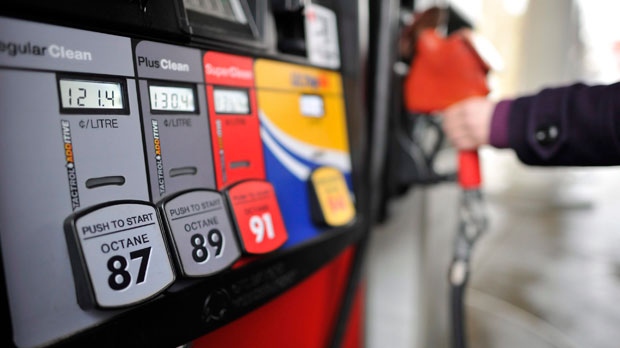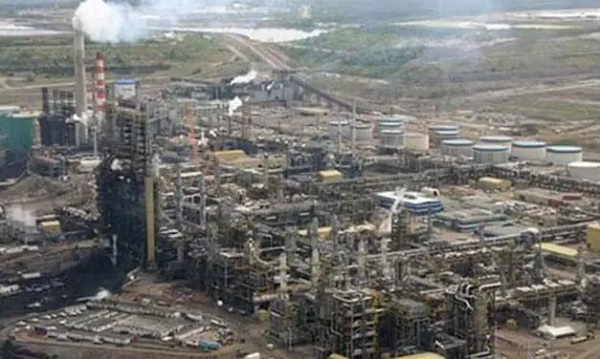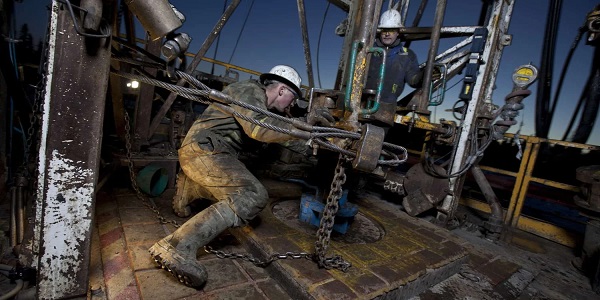Energy
Waiting to Launch a New Oil Pipeline to the West Coast Until the Trans Mountain Reaches Full Capacity is a Bad Idea

From Energy Now
By Jim Warren
Assume city managers know the capacity of the city’s wells, reservoirs and water treatment plant will be exceeded in five years. Should a city in that situation wait the five years until full capacity is achieved and the city starts running short of water before launching construction on its system expansion projects?
Unlike Trans Mountain Pipeline (TMX) CEO, Mark Maki, virtually everyone else involved in Western Canada’s petroleum and natural gas industries believes it is indeed possible to walk and chew gum at the same time.
On August 26, Maki told reporters that new oil pipelines to the West coast should be put on the back burner until at least 2030 after the pipeline he operates reaches its full capacity.
In response to Maki, Pierre Poilievre, among others, explained that it is possible to do two things at the same time—work to optimize the capacity of the TMX while at the same time putting the wheels in motion to get a new export oil pipeline to tidewater approved and built.
Alberta Energy Minister, Brian Jean, agrees that optimizing the TMX and building a new million-barrel-per-day (bpd) pipeline to the Northwest coast of BC should happen concurrently.
Jean told CTV that even with both the Trans Mountain and a new million bpd pipeline fully operating “we won’t meet Asia’s projected demand for Alberta’s heavy oil. As a government, we fully support every effort to increase TMX’s egress capacity to avoid egress bottlenecks as we take the time to approve and build new pipelines.”
For Premier Danielle Smith, getting a revived and expanded version of the original Northern Gateway project with a tidewater terminal at Prince Rupert has been a priority for her province that predates the passage of Bill C-5, The Building Canada Act.
TMX CEO Maki doesn’t seem to be aware of what the government he works for has been up to. In reaction to Canada’s tariff battle with Trump, our Liberal government has claimed it now supports fast-tracking projects like pipelines to protect our economic sovereignty and expand our export markets beyond the US. Mark Carney has called the tariff fight one of the biggest crises Canada has had to face. Given the urgency attached to increasing Canada’s economic resilience slow walking a Northern Gateway 2.0 makes no sense.
The new Building Canada Act (Bill C-5), under which the application for a new pipeline to tidewater will most likely be made, is only two months old and its supposedly “fast-tracked” approval process can take up to two full years. Added to this is the time it will take proponents of any new pipeline to the coast to assemble the financing, route assessments, engineering, surveys and other things required for their application. It is not difficult to imagine that obtaining approval under the new rules could take three or more years.
Under that scenario the new pipeline project wouldn’t even get on the launch pad until late 2028. Does Maki assume the sky will fall if the project got underway a little over a year before his rather self-serving “do me first and hold off the competition” deadline.
Adding insult to injury, BC’s NDP premier, David Eby, has apparently calculated that Maki’s efforts to postpone consideration of a new pipeline have let him off the hook. What a relief. He won’t have to flip flop between saying he might be willing to accept a new pipeline to his I do not support any oil pipelines position for five more years. All Eby has to say now is that Canada should maximize the use of the Trans Mountain before pursuing a new pipeline through BC.
Unfortunately, every pipeline detractor from Bloc leader, Yves-Francois Blanchet, to David Suzuki can now jump on the Mark Maki bandwagon and tell Canadians that no new oil pipelines are necessary. If Mark Carney and his squad of virtuous Liberals are looking for a way to weasel out of their already weak statements in support of a pipeline from Alberta to the West coast, Maki has given them cover to at least postpone their approval for five years.
It is interesting to note that a few months back the idea that no new oil pipelines are needed was floated by the green Jesus himself—Steven Guilbeault. Despite his demotion to minister of identity and culture, Guilbeault clearly remains a menace to the interests of western energy producers. Removing him from cabinet would be a welcome gesture in support of improving relations between Ottawa and alienated westerners.
In view of what Canadians have learned in recent months about the dangers of being overly reliant on a single customer for our exports, access to tidewater for our oil exports is obviously critical to our economic success and national sovereignty. And there are real risks associated with having a single infrastructure system supporting a key export–such as a pipeline and its export terminal. What happens if major problems arise causing the lengthy shutdown of operations on the Trans Mountain system?
In October of 1979, a Japanese freighter crashed into Vancouver’s Second Narrows rail bridge, knocking a complete section of the bridge into the Burrard Inlet. Prairie farmers initially feared the worst—repairs would take months and their ability to ship grain out of the big Vancouver terminals would be compromised. As it turned out the bridge didn’t reopen until March 1980.
Among the factors that helped prevent the sort of marketing disaster that would tank the incomes of over 200,000 prairie farmers was that we didn’t have all our eggs in a single basket. The Port of Prince Rupert on BC’s Northwest coast and the Lakehead terminals in Thunder Bay, along with rail shipments into the US helped prevented a total disaster.
The analogy is obvious, relying entirely on the Trans Mountain for our non-US exports when we can build alternatives is a risk we don’t need to take.
No less bizarre is Mark Maki’s assumption that a new piece of infrastructure can’t be built until the existing one is fully utilized. Where in the world of infrastructure planning is that maxim written in stone? What could be wrong with that line of thinking?
Let’s take for example the drinking water system for an urban municipality. Assume city managers know that the city’s population is predicted to rise by 2% per year for the next 10 years. The managers realize with that rate of growth the capacity of the city’s wells, reservoirs and water treatment plant will be exceeded in five years. The managers estimate that construction of the expanded infrastructure required to meet increased demand will take up to three years.
Here is a question reporters might ask Mr. Maki. Should a city in that situation take his advice and wait the five years until full capacity is achieved and the city starts running short of water before launching construction on its system expansion projects? What does he think happens in the real world of project planning?
Once again the Liberals have left us with more questions than answers. Were Maki’s comments on August 26, simply the puffery of a CEO looking to advance the interests of his company? Or are they thoroughly vetted talking points coming out of the prime minister’s office (PMO)?
If Maki came up with the inane five year postponement statement all on his own, he should give his head a shake, put on his big boy pants and walk it back. If he was running interference on behalf of a government backed-effort to kill new oil pipelines we have a bigger problem.
The most significant barrier to getting a new pipeline to the coast built is the federal government’s failure to deal with the threat to development posed by Bills C-69 and C-48. Blaming the postponement of such a project on the need to first optimize use of the TMX is deceitful.
Business
Oil tanker traffic surges but spills stay at zero after Trans Mountain Expansion
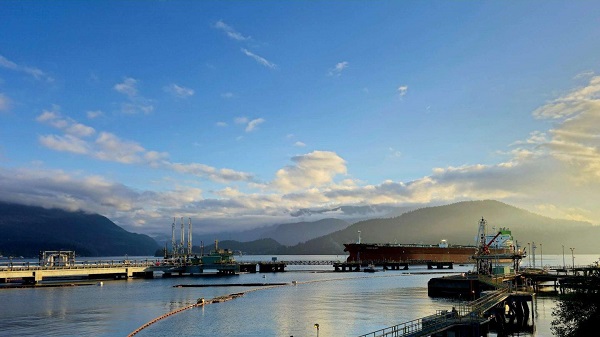
From the Canadian Energy Centre
Bigger project maintains decades-long marine safety record
The Trans Mountain system continues its decades-long record of zero marine spills, even as oil tanker traffic has surged more than 800 per cent since the pipeline’s expansion in May 2024.
The number of tankers calling at Trans Mountain’s Westridge Marine Terminal in the Port of Vancouver in one month now rivals the number that used to go through in one year.
A global trend toward safer tanker operations
Trans Mountain’s safe operations are part of a worldwide trend. Global oil tanker traffic is up, yet spills are down, according to the International Tanker Owners Pollution Federation, a London, UK-based nonprofit that provides data and response support.
Transport Canada reports a 95 per cent drop in ship-source oil spills and spill volumes since the 1970s, driven by stronger ship design, improved response and better regulations.
“Tankers are now designed much more safely. They are double-hulled and compartmentalized to mitigate spills,” said Mike Lowry, spokesperson for the Western Canada Marine Response Corporation (WCMRC).
WCMRC: Ready to protect the West Coast

One of WCMRC’s new response vessels arrives in Barkley Sound. Photo courtesy Western Canada Marine Response Corporation
From eight marine bases including Vancouver and Prince Rupert, WCMRC stands at the ready to protect all 27,000 kilometres of Canada’s western coastline.
Lowry sees the corporation as similar to firefighters — training to respond to an event they hope they never have to see.
In September, it conducted a large-scale training exercise for a worst-case spill scenario. This included the KJ Gardner — Canada’s largest spill response vessel and a part of WCMRC’s fleet since 2024.
“It’s part of the work we do to make sure everybody is trained and prepared to use our assets just in case,” Lowry said.
Expanding capacity for Trans Mountain

The K.J. Gardner is the largest-ever spill response vessel in Canada. Photo courtesy Western Canada Marine Response Corporation
WCMRC’s fleet and capabilities were doubled with a $170-million expansion to support the Trans Mountain project.
Between 2012 and 2024, the company grew from 13 people and $12 million in assets to more than 200 people and $213 million in assets.
“About 80 per cent of our employees are mariners who work as deckhands, captains and marine engineers on our vessels,” Lowry said.
“Most of the incidents we respond to are small marine diesel spills — the last one was a fuel leak from a forest logging vessel near Nanaimo — so we have deployed our fleet in other ways.”
Tanker safety starts with strong rules and local expertise

Tanker loading at the Westridge Marine Terminal in the Port of Vancouver. Photo courtesy Trans Mountain Corporation
Speaking on the ARC Energy Ideas podcast, Trans Mountain CEO Mark Maki said tanker safety starts with strong regulations, including the use of local pilots to guide vessels into the harbour.
“On the Mississippi River, you have Mississippi River pilots because they know how the river behaves. Same thing would apply here in Vancouver Harbour. Tides are strong, so people who are familiar with the harbor and have years and decades of experience are making sure the ships go in and out safely,” Maki said.
“A high standard is applied to any ship that calls, and our facility has to meet very strict requirements. And we have rejected ships, just said, ‘Nope, that one doesn’t fit the bill.’ A ship calling on our facilities is very, very carefully looked at.”
Working with communities to protect sensitive areas
Beyond escorting ships and preparing for spills, WCMRC partners with coastal communities to map sensitive areas that need rapid protection including salmon streams, clam beds and culturally important sites like burial grounds.
“We want to empower communities and nations to be more prepared and involved,” Lowry said.
“They can help us identify and protect the areas that they value or view as sensitive by working with our mapping people to identify those areas in advance. If we know where those are ahead of time, we can develop a protection strategy for them.”
Bruce Dowbiggin
Integration Or Indignation: Whose Strategy Worked Best Against Trump?

““He knows nothing; and he thinks he knows everything. That points clearly to a political career.” George Bernard Shaw
In the days immediately following Donald Trump’s rude intervention into the 2025 Canadian federal election— suggesting Canada might best choose American statehood— two schools of thought emerged.
The first and most impactful school in the short term was the fainting-goat response of Canadian’s elites. Sensing an opening in which to erode Pierre Poilievre’s massive lead in the 2024 polls over Justin Trudeau, the Laurentian elite concocted Elbows Up, a self-pity response long on hurt feelings and short on addressing the issues Trump had cited in his trashing of the Canadian nation state.
In short order they fired Trudeau into oblivion, imported career banker Mark Carney as their new leader in a sham convention and convinced Canada’s Boomers that Trump had the tanks ready to go into Saskatchewan at a moment’s notice. The Elbows Up meme— citing Gordie Howe— clinched the group pout.

(In fact, Trump has said that America is the world’s greatest market, and if those who’ve used it for free in the past [Canada] want to keep special access they need to pay tariffs to the U.S. or drop protectionist charges on dairy and more against the U.S.)
The ruse worked out better than they could have ever imagined with Trump even saying he preferred to negotiate with Carney over Poilievre. In short order the Tories were shoved aside, the NDP kneecapped and the pet media anointed Carney the genius skewing Canada away from its largest trade partner to the Eurosphere. We remain in that bubble, although the fulsome promises of Carney’s first days are now coming due.
Which brings us to the second reaction. That was Alberta premier Danielle Smith bolting to Mar A Lago in the days following Trump’s comments. Her goal was to put pride aside and accept that a new world order was in play for Canada. She met with U.S. officials and, briefly, with Trump to remind them that Canada’s energy industry was integral to American prosperity and Canadian stability.
Needless to say, the fainting goats pitched a fit that not everyone was clutching pearls and rending garments in the wake of Trump’s dismissive assessment of his northern neighbours. Their solution to Trump was to join China in retaliatory tariffs— the only two nations to do so— and to boycott American products and travel. Like the ascetic monks they cut themselves off from real life. Trump has yet to get back to Carney the Magnificent

And Smith? She was a “traitor” or a “subversive” who should be keel hauled in the North Saskatchewan. For much of the intervening months she has been attacked at home in Alberta by the N-Deeps and in Ottawa by just about everyone on CBC, CTV, Global and the Globe & Mail. “How could she meet with the Cheeto?”
Nonetheless conservatives in the province moved toward a more independence within Canada. Smith articulated her demands for Alberta to prevent a referendum on whether to remain within Confederation. At the top of her list were pipelines and access to tidewater. Ergo, a no-go for BC’s squish premier David Eby who is the process of handing over his province to First Nations.
It became obvious that for all of Carney’s alleged diplomacy in Europe and Asia (is the man ever home?) he had a brewing disaster in the West with Alberta and Saskatchewan growing restless. In a striking move against the status quo, Nutrien announced it would ship its potash to tidewater via the U.S., thereby bypassing Vancouver’s strike-prone, outdated port and denying them billions.

Suddenly, Smith’s business approach began making eminent good sense if the goal is to keep Canada as one. So we saw last week’s “memorandum of understanding” between Alberta and Ottawa trading off carbon capture and carbon taxes for potential pipelines to tidewater on the B.C. coast. A little bit of something for everyone and a surrender on other things.
The most amazing feature of the Mark Carney/Danielle Smith MOU is that both politicians probably need the deal to fail. Carney can tell fossil-fuel enemy Quebec that he tried to reason with Smith, and Smith can say she tried to meet the federalists halfway. Failure suits their larger purposes. Which is for Carney to fold Canada into Euro climate insanity and Smith into a strong leverage against the pro-Canada petitioners in her province.
Soon enough, at the AFN Special Chiefs Assembly, FN Chief Cindy Woodhouse Nepinak told Carney that “Turtle Island” (the FN term for North America popularized by white hippy poet Gary Snyder) belongs to the FN people “from coast to coast to coast.” The pusillanimous Eby quickly piped up about tanker bans and the sanctity of B.C. waters etc.
Others pointed out the massive flaw in a plan to attract private interests to build a vital bitumen pipeline if the tankers it fills are not allowed to sail through the Dixon Entrance to get to Asia.
But then Eby got Nutrien’s message that his power-sharing with the indigenous might cause other provinces to bypass B.C. (imagine California telling Texas it can’t ship through its ports over moral objections to a product). He’s now saying he’s open to pipelines but not to lift the tanker ban along the coast. Whatever.
Meanwhile the kookaburras of isolation back east continue with virtue signalling on American booze— N.S. to sell off its remains stocks — while dreaming that Trump’s departure will lead to the good-old days of reliance on America’s generosity.
But Smith looks to be wining the race. B.C.’s population shrank 0.04 percent in the second quarter of 2025, the only jurisdiction in Canada to do so. Meanwhile, Alberta is heading toward five million people, with interprovincial migrants making up 21 percent of its growth.
But what did you expect from the Carney/ Eby Tantrum Tandem? They keep selling fear in place of GDP. As GBS observed, “You have learnt something. That always feels at first as if you have lost something.”
Bruce Dowbiggin @dowbboy is the editor of Not The Public Broadcaster A two-time winner of the Gemini Award as Canada’s top television sports broadcaster, his new book Deal With It: The Trades That Stunned The NHL And Changed hockey is now available on Amazon. Inexact Science: The Six Most Compelling Draft Years In NHL History, his previous book with his son Evan, was voted the seventh-best professional hockey book of all time by bookauthority.org . His 2004 book Money Players was voted sixth best on the same list, and is available via brucedowbigginbooks.ca.
-

 Alberta1 day ago
Alberta1 day agoAlberta Sports Hall of Fame Announces Class of 2026 Inductees
-

 Business2 days ago
Business2 days agoNew Chevy ad celebrates marriage, raising children
-

 Business1 day ago
Business1 day agoCanada’s climate agenda hit business hard but barely cut emissions
-

 MAiD2 days ago
MAiD2 days agoFrom Exception to Routine. Why Canada’s State-Assisted Suicide Regime Demands a Human-Rights Review
-
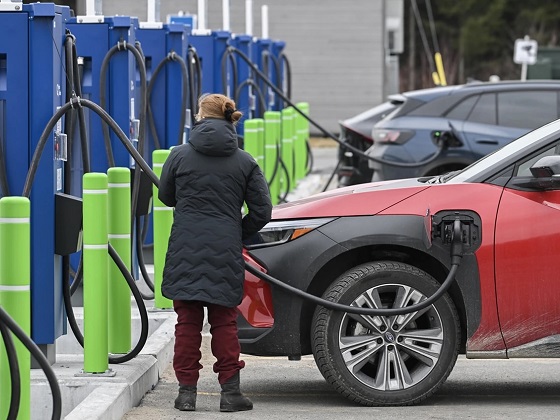
 Automotive2 days ago
Automotive2 days agoPower Struggle: Governments start quietly backing away from EV mandates
-

 Alberta2 days ago
Alberta2 days agoThis new Canada–Alberta pipeline agreement will cost you more than you think
-

 Energy2 days ago
Energy2 days agoUnceded is uncertain
-

 Business14 hours ago
Business14 hours agoCarney’s Toronto cabinet meetings cost $530,000







